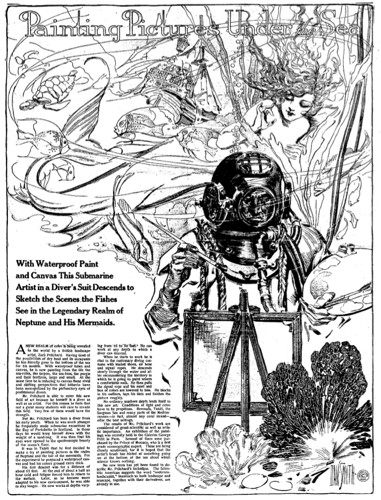Art
Toothsome Shoes for Men
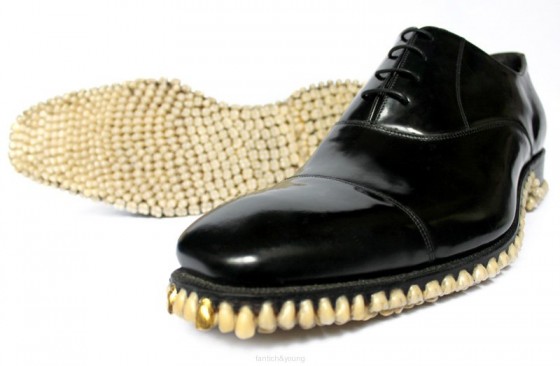
Weird Shoes are not just for women! The makers of the apex predator shoes
shown above say they contain 1050 teeth from dentures! At the link you will see on left side that they also make the apex predator suit.
Posted By: Tyrusguy - Fri Oct 12, 2012 -
Comments (3)
Category: Art, Fashion, Shoes
The Rain Room
An art installation by Random International currently at the Barbican:More than the technical virtuosity necessary for its success, the piece relies on a sculptural rigour, with the entire Curve transformed by the monumental proportions of this carefully choreographed downpour and the sound of water.
Posted By: Alex - Thu Oct 11, 2012 -
Comments (5)
Category: Art
The Art of Jonathon Keats

Jonathon Keats
But Keats has been active since then. He's got a new installation titled "Cloning Celebrity" at San Francisco's Modernism Gallery. Here's a description:

Dan Schifrin, writing in jweekly.com, describes some of Keats's other projects:
In 2004, in collaboration with U.C. Berkeley geneticists, Keats attempted to genetically engineer God in a laboratory. Keats determined that God bore a striking genetic similarity to algae, but — employing proper scientific language — he acknowledged that the study was "not definitive."...
He also was commissioned by the Contemporary Jewish Museum to make a modern version of manna, which he interpreted as a pillbox full of placebos — manna being whatever medicine was needed at that moment.
Posted By: Alex - Sun Sep 23, 2012 -
Comments (7)
Category: Art
The Controversial Art of Martin Creed
Martin Creed has a reputation as one of the most controversial artists in the UK. People seem to either love him or hate him. He won the prestigious Turner Prize in 2001, so evidently some critics love him. But what's your opinion? I've listed some of his works below.Work No. 227: Lights Going On and Off. He programmed the lights in an art gallery to turn on and off every five seconds.
Work No. 850: Duveen Commission. He hired athletes to sprint through the Tate Gallery every 30 seconds, all day, every day for four and a half months.

Work No. 628: Half the Air in a Given Space. He filled an art gallery with blue balloons.

Work No. 610: Sick Film. He made a video showing a series of people who walk into a white studio and vomit. (The first section of the film, below, is on youtube.)
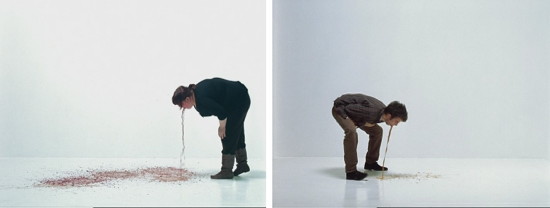

Read more about his work here and here.
Posted By: Alex - Wed Sep 19, 2012 -
Comments (7)
Category: Art, Body Fluids
Schizophrenia by Alessandro Brighetti
Watch ferrofluids ooze around a black skull, to the tune of Ave Maria. (via notcot)
Posted By: Alex - Wed Sep 12, 2012 -
Comments (5)
Category: Art, Video
Four Weird Vintage Postcards



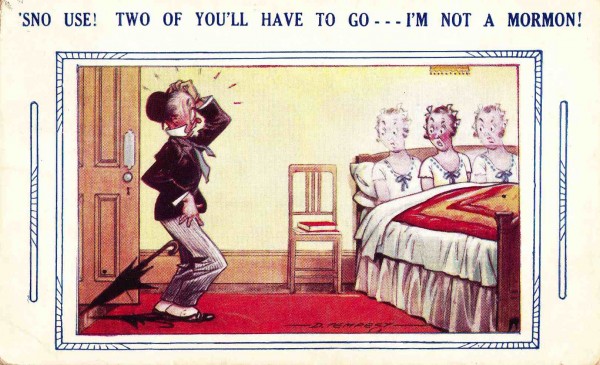
Click on any image to enlarge.
Be sure to use Number Four in all anti-Romney campaigning.
Posted By: Paul - Thu Sep 06, 2012 -
Comments (7)
Category: Art, Religion, Stereotypes and Cliches, Postal Services
The Underwater Art of Zarh Pritchard
Zarh H. Pritchard (1866-1956) is a little-remembered artistic pioneer of the 20th century. (There's not even a wikipedia page about him!) His claim to fame is that he was the first artist to paint underwater.Pritchard would descend to the ocean floor in a diving suit and then paint using waterproof paints on a lambskin canvas soaked in oil. An article in the Fort Wayne Journal Gazette (June 18, 1922) provides more details about the process:
His first descent was for a distance of about 65 feet. At the end of about a half an hour cold and fatigue forced him to return to the surface. Later, as he became more adapted to his new environment, he was able to stay longer. He now works at depths varying from 16 to 50 feet. He can work at any depth to which a diver can descend.
When he starts to work he is clad in the customary diving costume with leaded shoes, air hose and signal ropes. He descends slowly through the water and after reconnoitering the territory in which he is going to paint selects a comfortable rock. He then pulls the signal rope and his easel and box of colors are lowered to him. He blocks in his outlines, lays his tints and finishes the picture roughly.
Some of Pritchard's underwater works are below. They sold quite well. The Prince of Monaco, who was a respected oceanographer in addition to being royalty, was a big fan and bought many of them. Read more about Pritchard here.
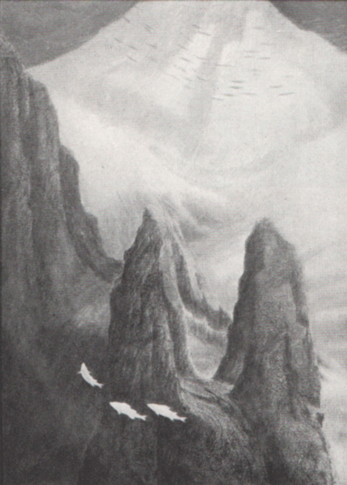
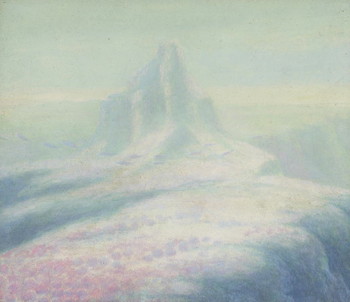
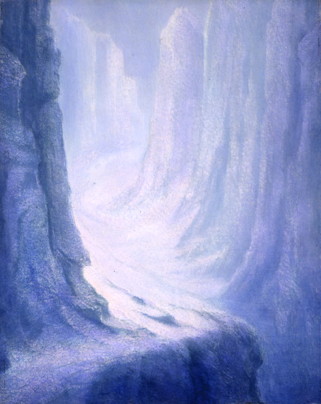
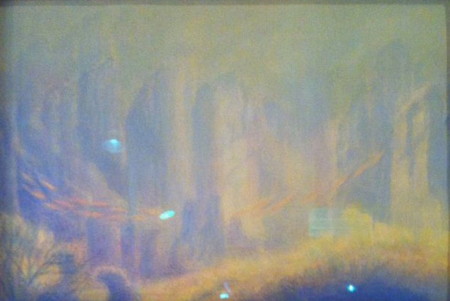
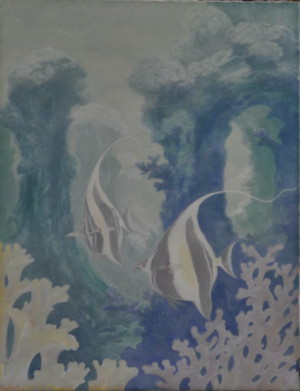
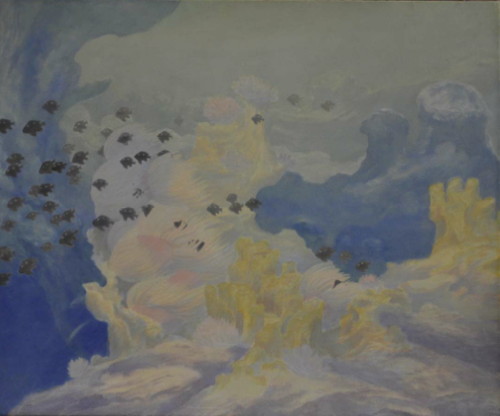
Posted By: Alex - Tue Aug 28, 2012 -
Comments (4)
Category: Art, Oceans and Maritime Pursuits
Walter Pichler’s TV Helmet of 1967
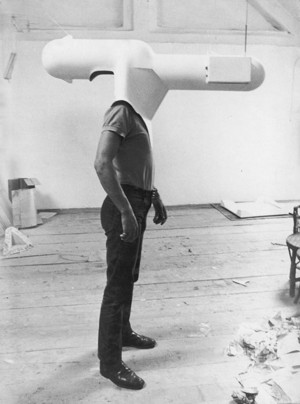
From db-artmag.com:
Read more here.
Posted By: Alex - Sat Aug 18, 2012 -
Comments (7)
Category: Art, 1960s
Shopping Cart Art
Residents of Campbelltown, Australia woke on Sunday to find that someone (presumably teenagers) had stacked shopping carts from local stores into a big pyramid outside the train station. This has sparked a debate in the town about the definition of art. Specifically, is the shopping cart pyramid art, or just vandalism? The mayor of Campbelltown, for one, feels that shopping carts (or shopping trolleys, as they say down there) have no legitimate place in art. Carts, he says, "are only to be used to carry groceries from the shops to your car." Links: Macarthur Chronicle, Facebook.
Posted By: Alex - Tue Jul 10, 2012 -
Comments (6)
Category: Art
Jewel Spew
Artist Kourtney Keller offers the following explanation of what's going on in her video:the subject of JEWEL SPEW is caught in a hypnotic video loop of spewing bling. She is not only surrounded by what is afflicting her, but appears contagious.
Posted By: Alex - Sat Jul 07, 2012 -
Comments (7)
Category: Art, Jewelry, Video

| Who We Are |
|---|
| Alex Boese Alex is the creator and curator of the Museum of Hoaxes. He's also the author of various weird, non-fiction, science-themed books such as Elephants on Acid and Psychedelic Apes. Paul Di Filippo Paul has been paid to put weird ideas into fictional form for over thirty years, in his career as a noted science fiction writer. He has recently begun blogging on many curious topics with three fellow writers at The Inferior 4+1. Contact Us |

